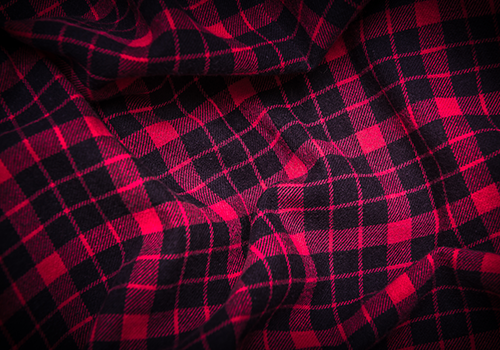
Did you know plaid has meant a lot of different things to many different people during the thousands of years that people have been wearing this iconic fabric?
In fact, plaid isn’t even the pattern’s proper name. The right word for it is ‘tartan’, which was first used to describe the individual colours and patterns used for clothes of various Scottish clans. What is plaid? It is a woven fabric which makes use of coloured yarns that cross over each other to create a blocky, linear pattern that we all know.
Interestingly, while they often came in the same colours earlier, they were actually heavy traveling cloaks worn during the harsh Scottish winters. Plaid replaced tartan when the patterns became famous with British and American textile manufacturers recreating the fabrics without the symbolic meaning associated with it. These local patterns became synonymous with the regional clans scattered all around Scotland over time.
During the 18th century, tartan was made the military uniform during James Francis Edward Stuart’s 1714 rebellion against the English monarchy. At the same time, a pattern, which is known today as “Black Watch Plaid” became associated with the Royal Highland Regiment, which was a Scottish military force. It was the pride of the UK army until it was split in 2003. Although after the Scottish forces were defeated at the Battle of Culloden in 1746, the multi-coloured tartans were banned for about a century.
In the 1970s, plaid was seen everywhere in the U.S. not just on shirts, but also home décor. At the same time, in England, Queen Elizabeth II’s royal tartan was appropriated in the form of punk style. The plaid was worn distressed or ripped up for a rebellious look. It continued to be the uniform of the rebel till the 90s, where it was a huge part of ‘grunge’ style.
In recent times, plaid is seen sported by a lot of people and it seems like it is one pattern that is here to stay. It has gone through several iterations and has been worn in several ways possible, standing the test of time. What works for it is its versatility and complements every wardrobe and home.